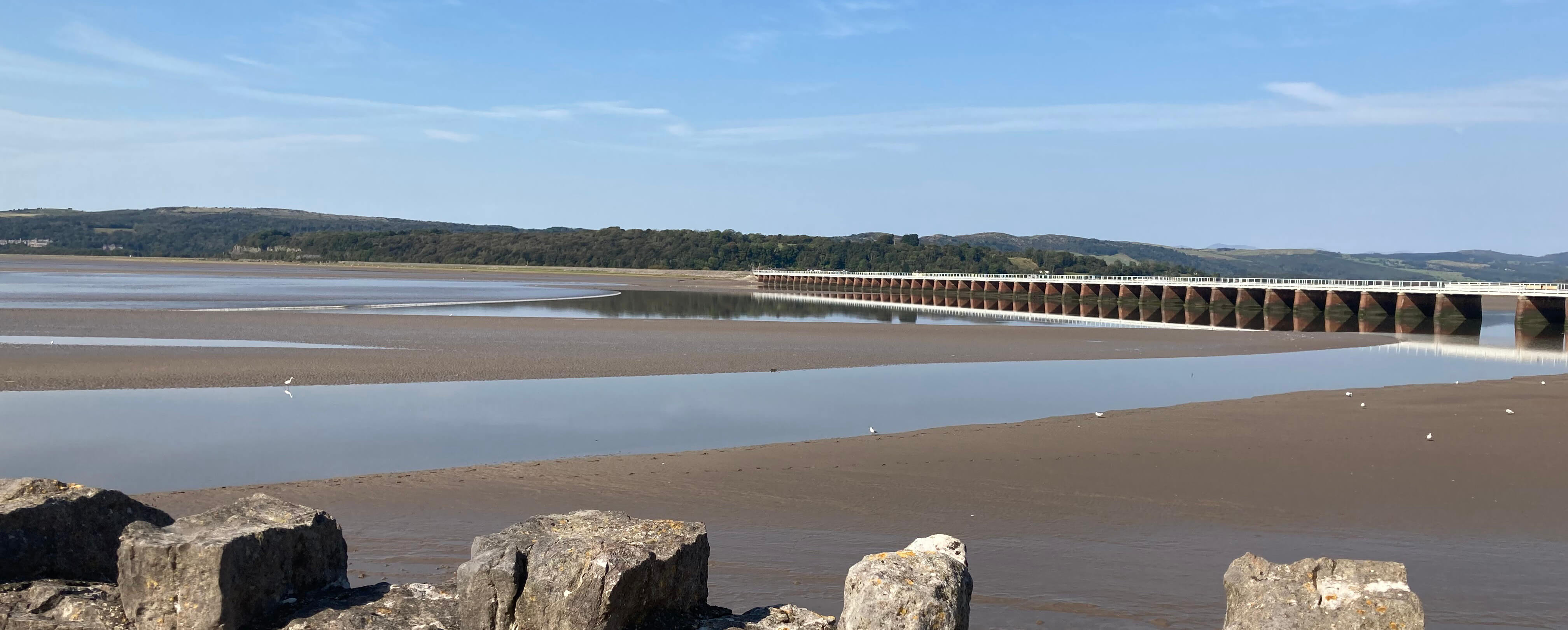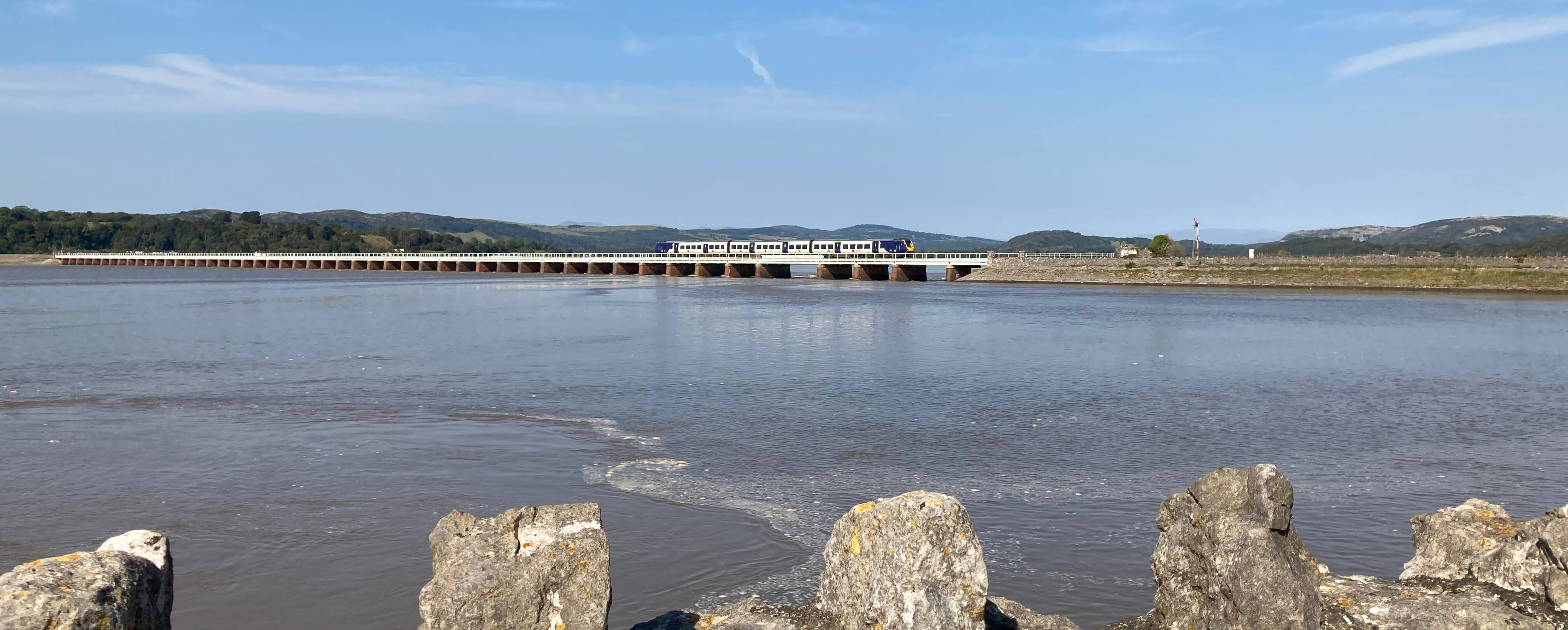

Home Preamble Index Areas Hills Lakes Dales Map References Me Drakkar

The Kent estuary and Kent Viaduct
Eyes turned to the west, to where the river enters Morecambe Bay. Were there white wave tops on the river? Were the birds moving away from approaching water? Were the mudflats disappearing? Soon there was no doubt. The wave at the head of the tide was coming. It was only a small wave – nowhere near large enough for surfers or canoeists – but it moved fast. With a gentle rippling sound, it swept over the mud and approached the Kent Viaduct. Here, the tide’s speed and force was clear as it splashed up the viaduct supports, creating turbulence under and beyond the bridge. Cumbria Fire and Rescue Service took the opportunity to practise by manoeuvring their boat back and forth in the rapids at the bridge.
The tidal 'wave' approaching the viaduct
High tide was forecast to reach ten metres, although it would, of course, be less than that at Arnside. It is such a mesmerising sight, even though it is entirely predictable and has happened twice daily for millennia, that one feels obliged to watch until high tide is reached. Inch by inch the water rises up the viaduct supports. The mudflats that previously occupied so much of the estuary that you could imagine walking across (but, of course, you can’t because you’d be certain to become stuck in the mud) slowly disappeared. The bank near where we sat, which previously had seemed far from the water, eventually had water lapping at the grassy edges.
The Kent estuary at high tide
It is strangely satisfying just sitting and watching the tide come in. There is no excitement but a steady inevitability to the process. Perhaps it’s because it’s fundamentally reassuring that it all happens precisely as predicted. We have upset so many natural processes that it’s a relief that one, at least, still happens as it always has. It would take something really ‘ambitious’ to upset the Arnside tide – such as a barrier across Morecambe Bay, as is proposed every decade or so.
Arnside
We continued on the path by the river (or sea) edge, passing the Coastguard Station, responsible for the siren, but the path soon became slippery and muddy where the tide had overflowed and, further on, some of it was still under water. We had no ambitions to walk far, so we returned for an ice-cream, while watching the water slowly ebb away.“He's a-going out with the tide,” said Mr. Peggotty to me, behind his hand.Not wanting to end on such a sad note, I tried to find examples in literature of an association between childbirth and incoming tides – but I couldn't find any. Sadly, scientific analysis has found no correlation between births/deaths and tides rising/falling. Why would anyone think otherwise? Those ancient beliefs arose before we had a theory of gravitation to explain that the moon is largely responsible for our tides. There are plenty of people today who believe that the moon affects us in various ways.
My eyes were dim, and so were Mr. Peggotty's; but I repeated in a whisper, “With the tide?”
“People can’t die, along the coast,” said Mr. Peggotty, “except when the tide’s pretty nigh out. They can’t be born, unless it’s pretty nigh in – not properly born, till flood. He’s a-going out with the tide. It’s ebb at half-arter three, slack water half an hour. If he lives till it turns, he’ll hold his own till past the flood, and go out with the next tide.”
...
Mr Peggotty touched me, and whispered with much awe and reverence, “They are both a-going out fast.”
...
And, it being low water, he went out with the tide.
Home Preamble Index Areas Hills Lakes Dales Map References Me Drakkar
© John Self, Drakkar Press, 2018-

Top photo: Rainbow over Kisdon in Swaledale; Bottom photo: Ullswater